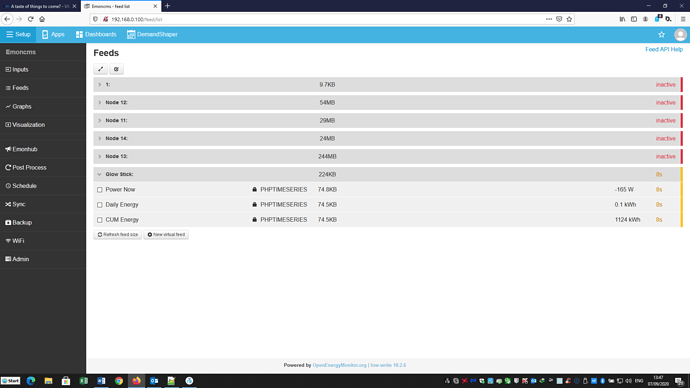I’ve installed a device to capture SMETS1 smart meter data every few secs
https://www.hildebrand.co.uk/our-products/glow-stick-wifi-cad/ 12
It’s USB powered so I just stuck it into a Raspberry Pi (just for the power/no data flows) – very convenient.
The Hildebrand BRIGHT mobile App provides comprehensive smart meter data updating about every 6 secs.
Having been registered to also access the data via MQTT – a free service - I’ve now cobbled together a script to integrate 10 secs data into emoncms – power now, energy today and CUM energy.
It owes a lot to the efforts of others. And this handy tool helped …
https://curl.trillworks.com/#python
The script has HOW TO notes embedded.
glow.zip (2.6 KB)
It’s a standalone Python script not relying on another bash script being called.
And the data is revenue grade accurate – our bills are based on it – unlike CTs.
It may be of interest.
